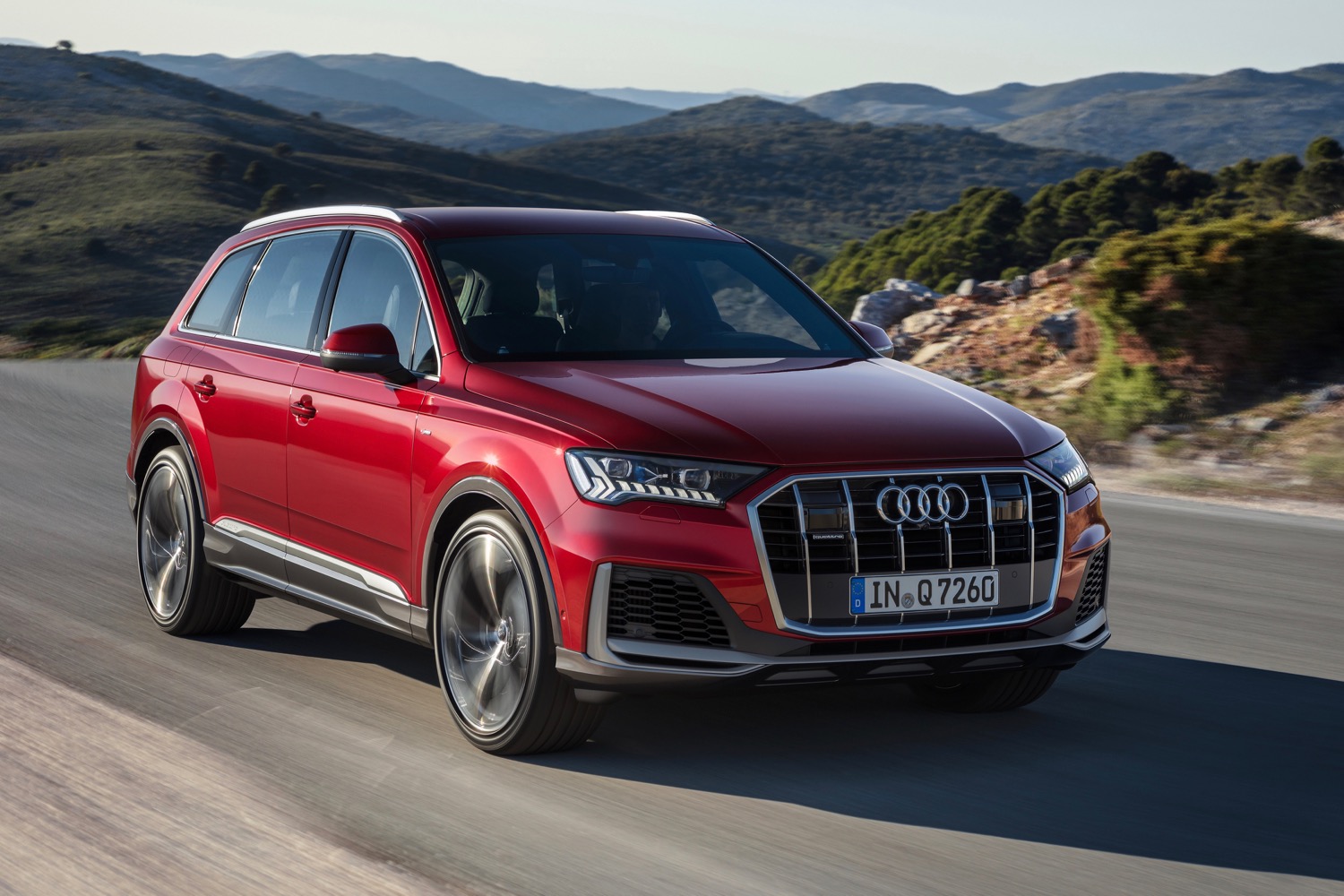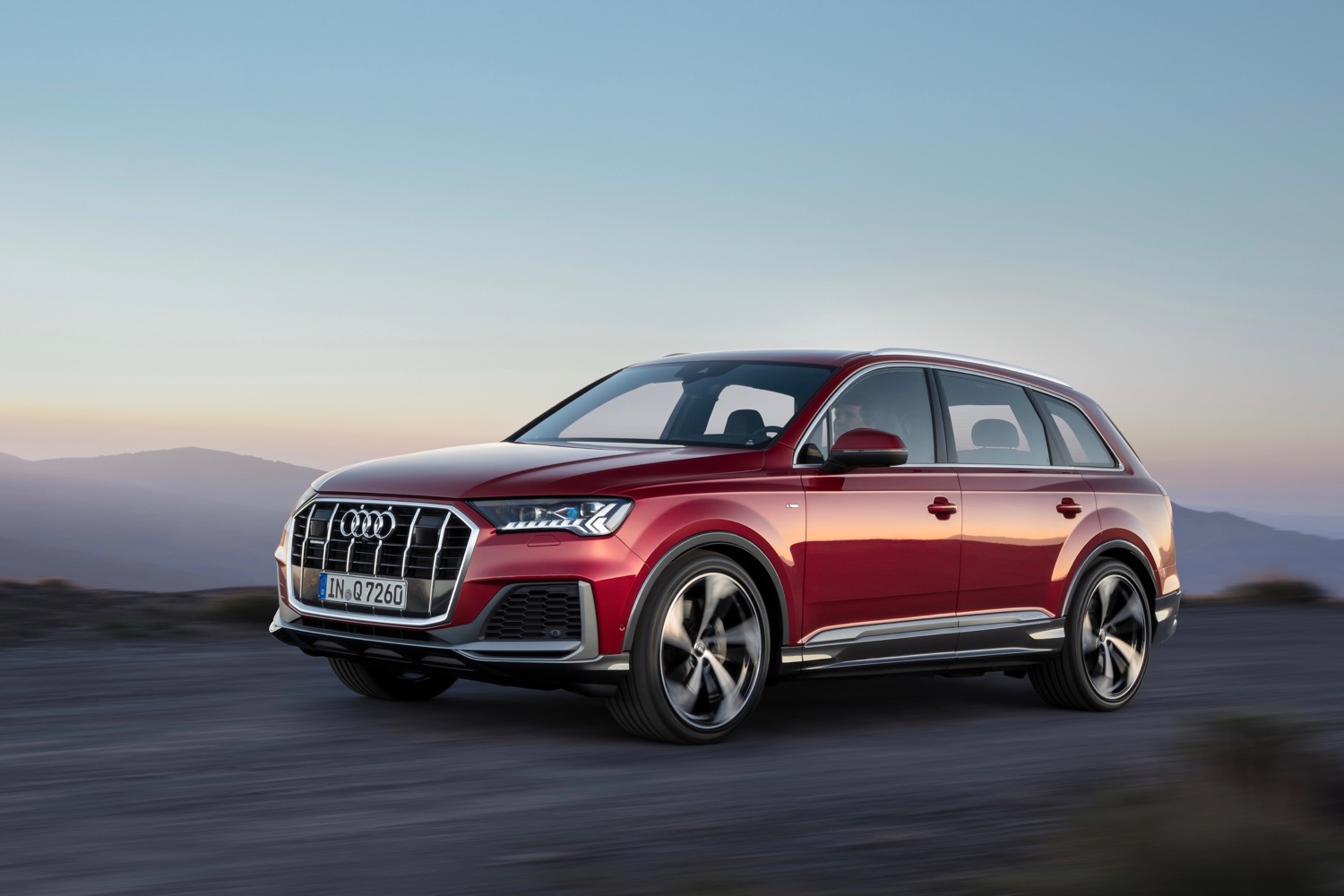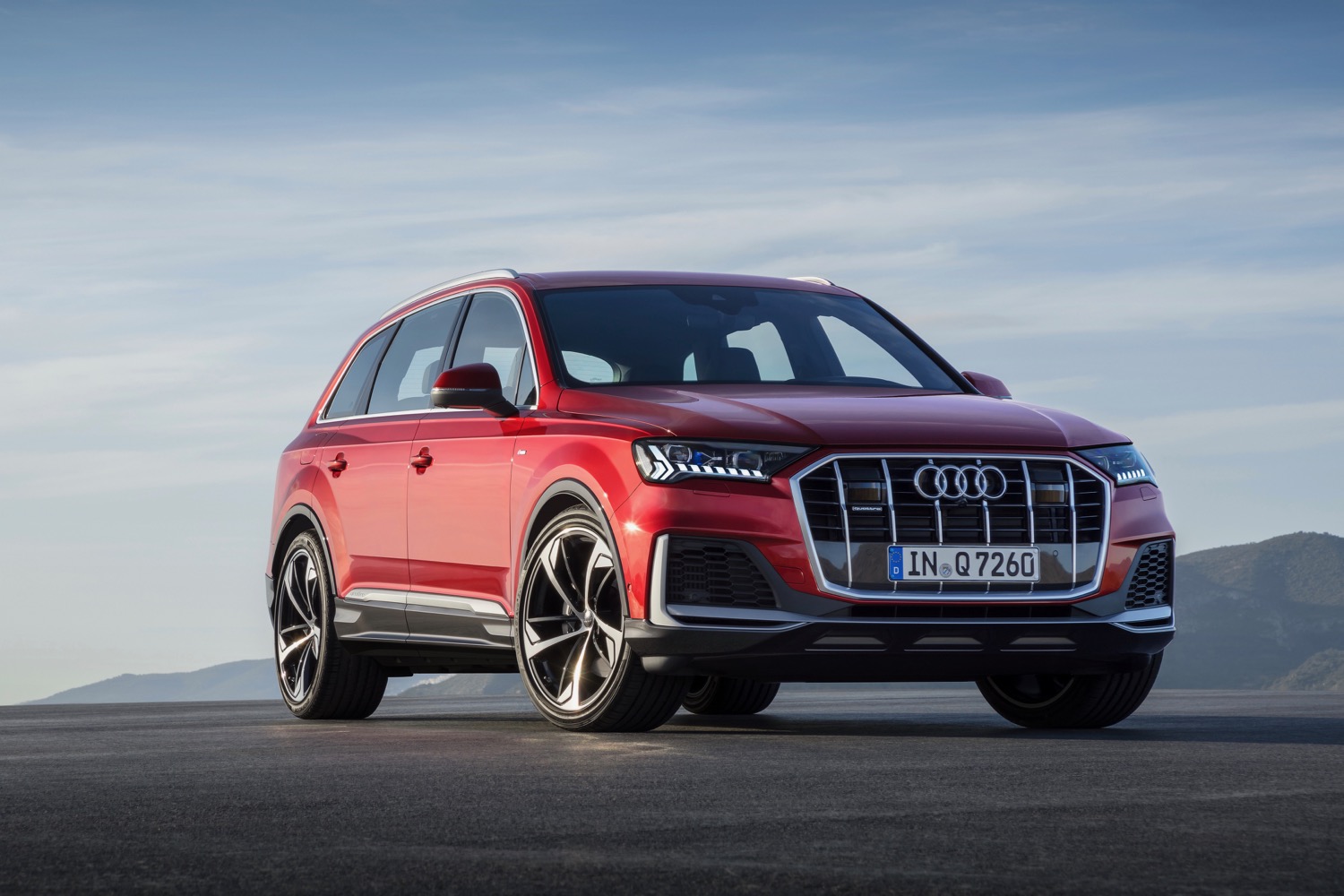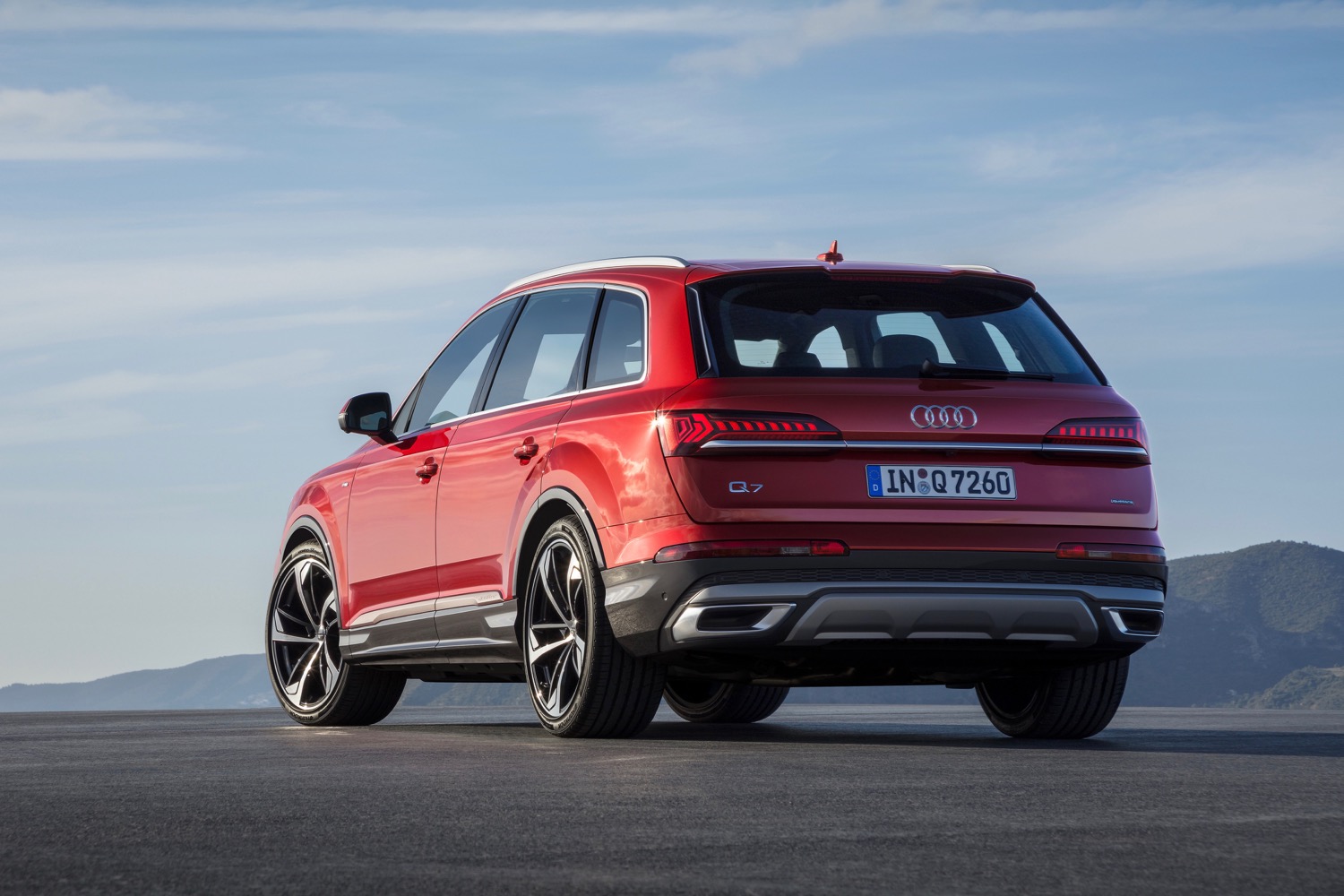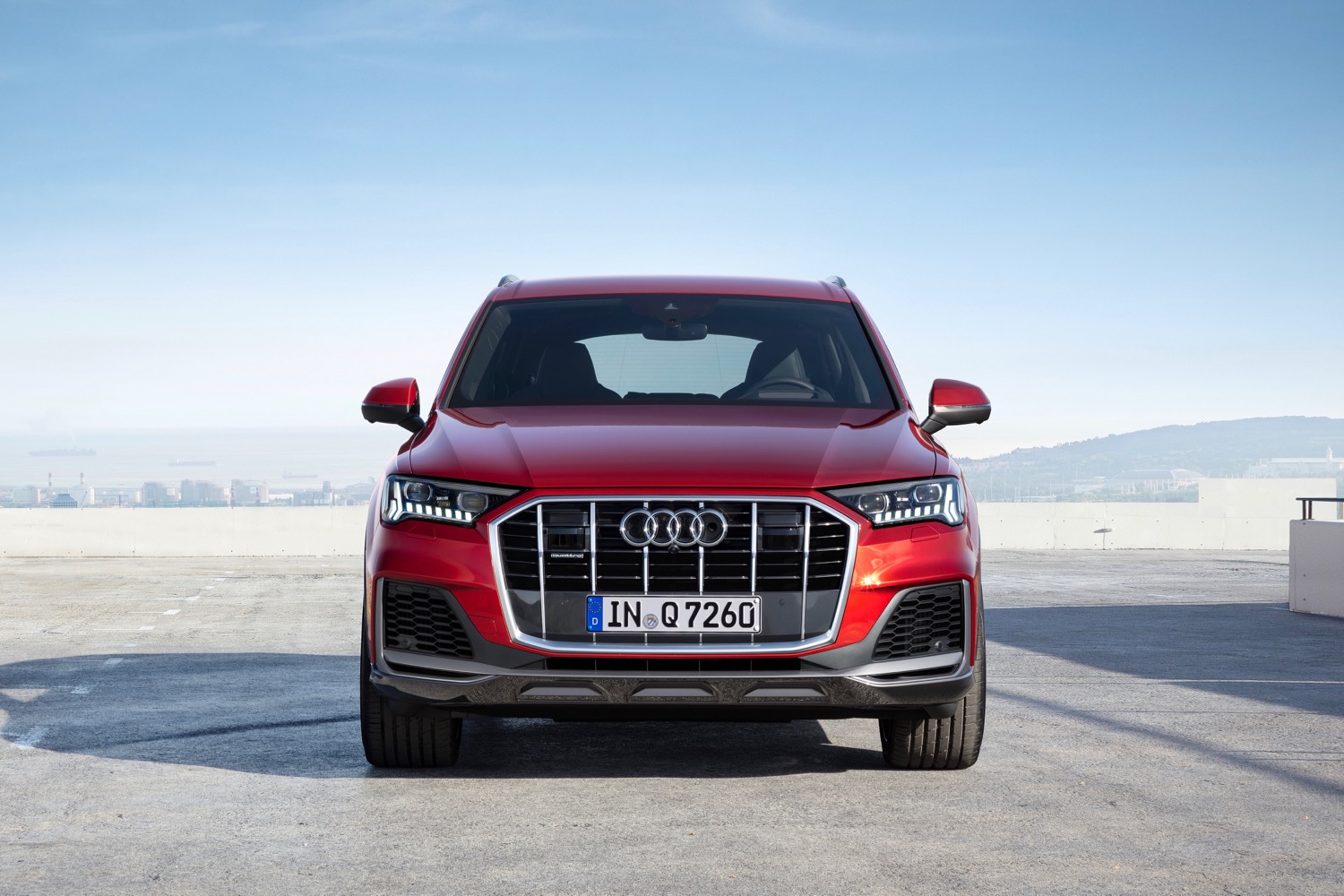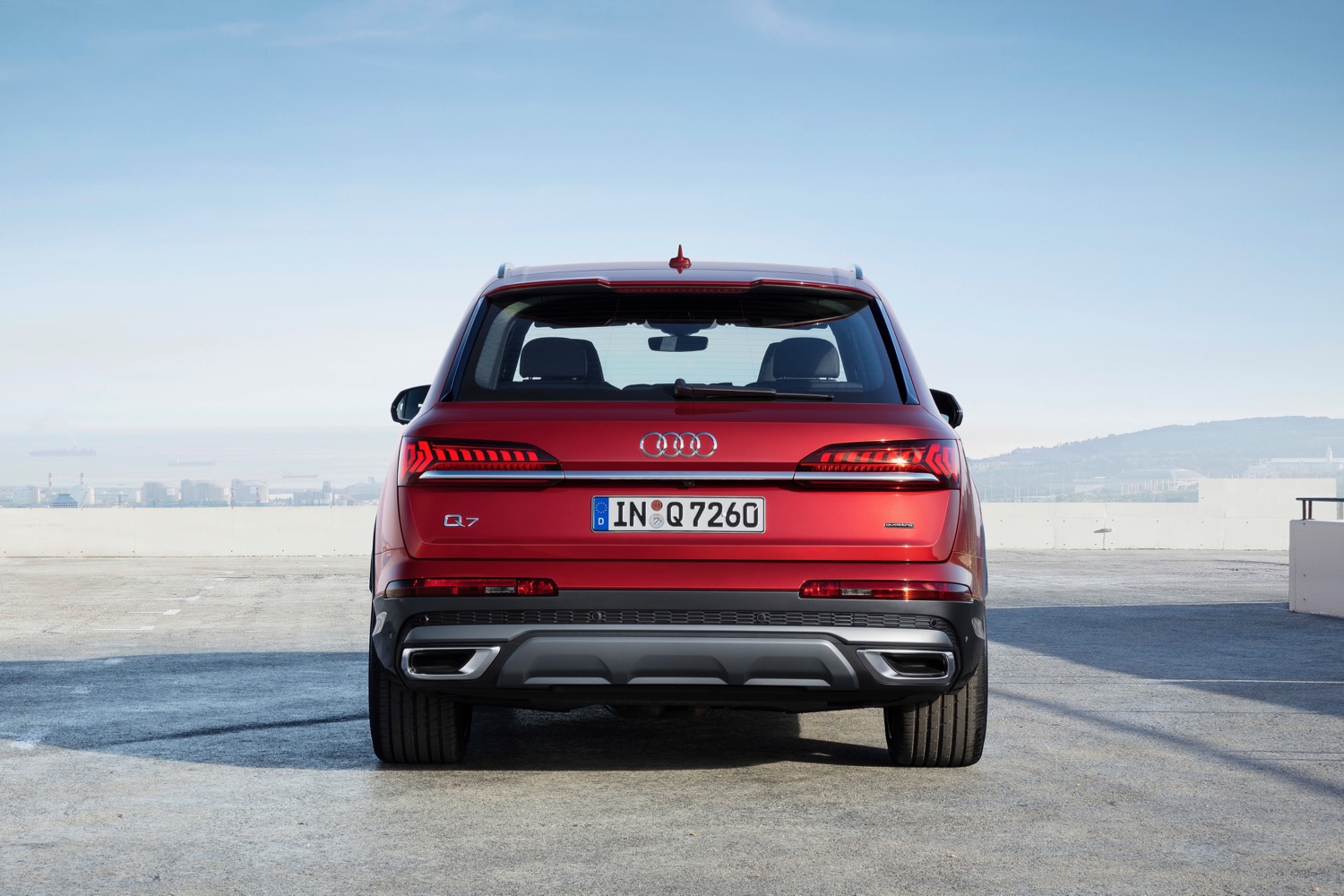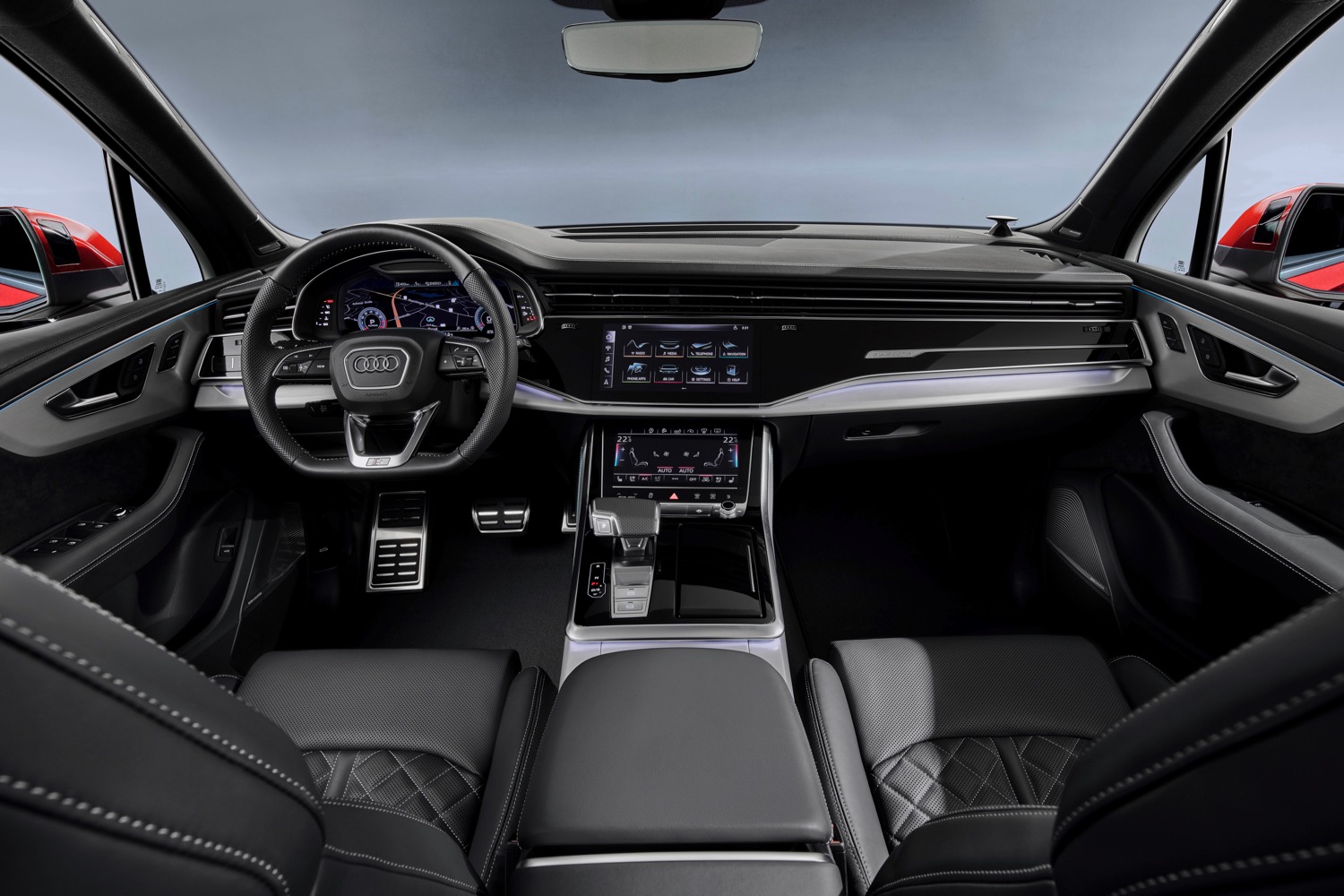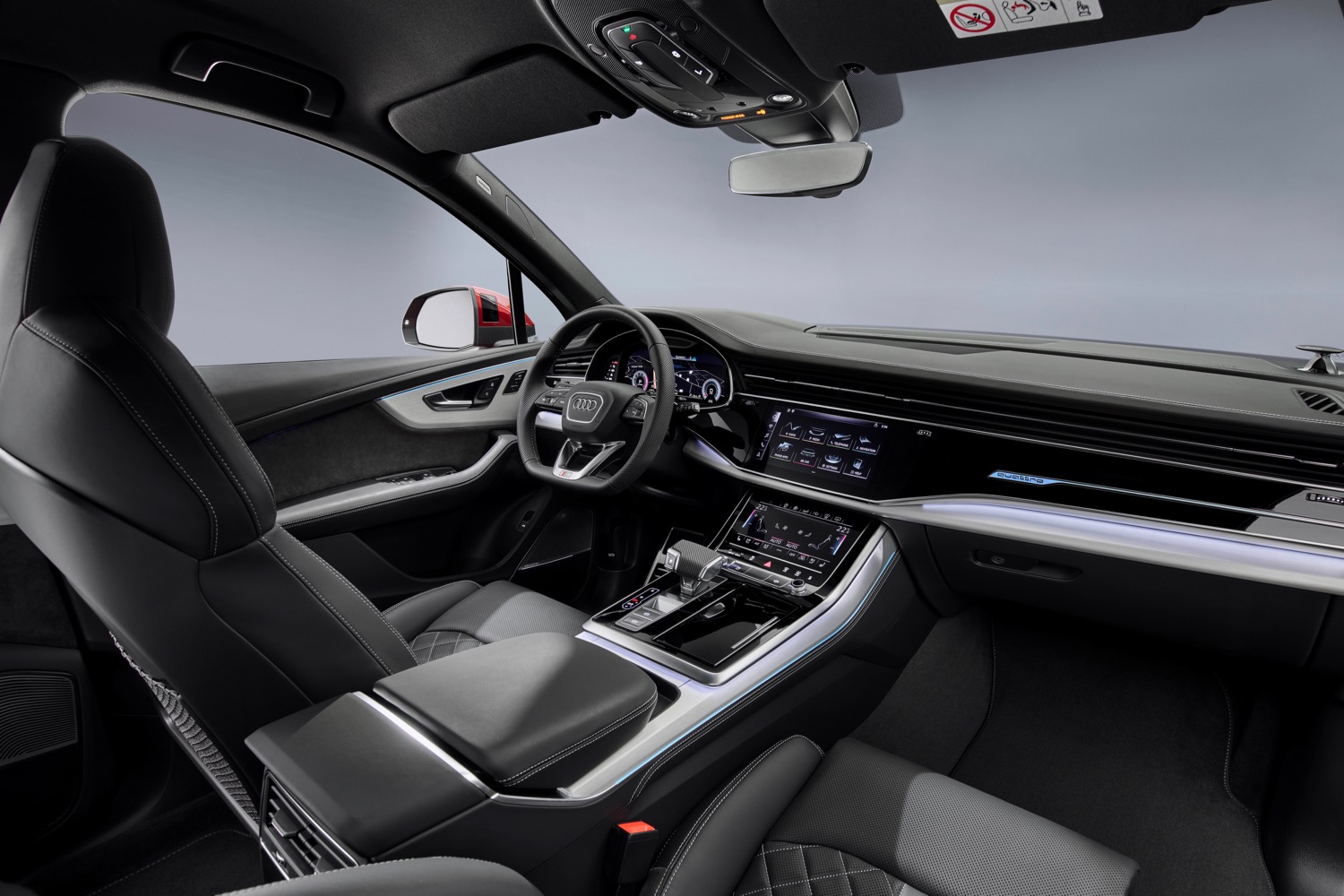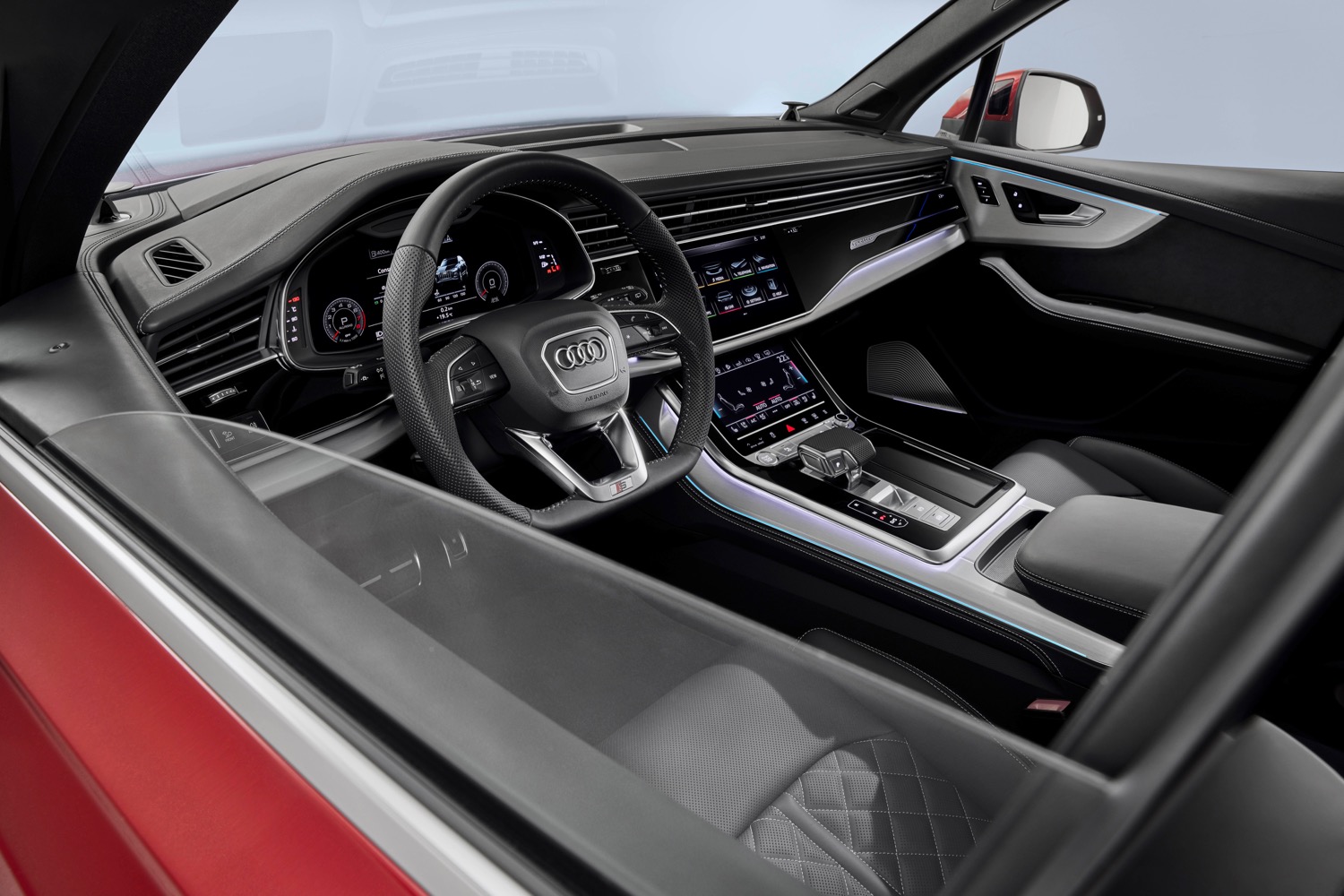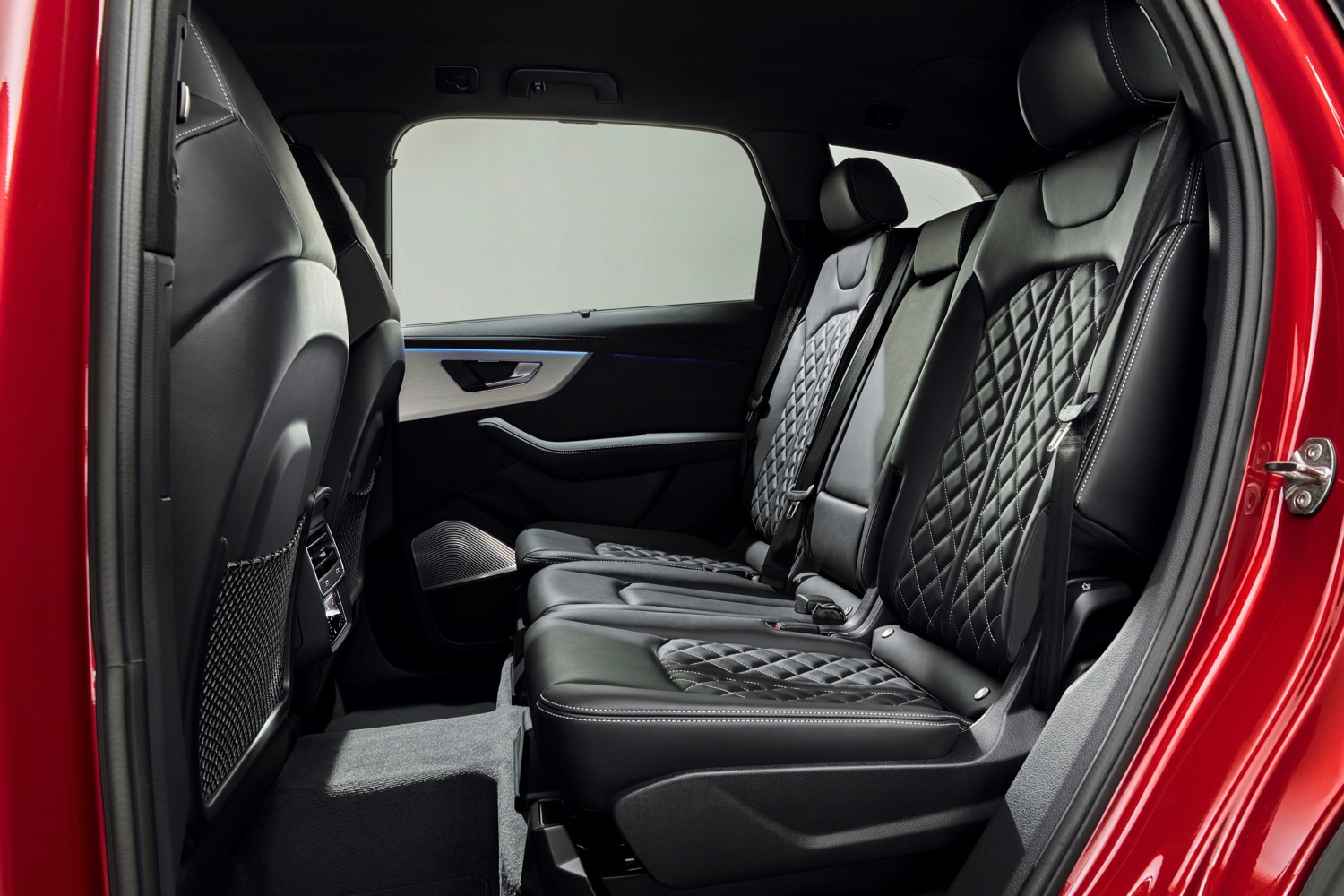The 2020 Audi Q7 is getting a handful of updates, incorporating Audi’s latest tech. The three-row family SUV gets revised styling, as well as the newer version of Audi’s MMI infotainment system previously seen on the Q8 and other models. Audi is only discussing the European-market Q7 at this time, but most of the changes will likely carry over to the U.S.-market version.
On the outside, the Q7 gets a bit of cosmetic surgery. A more pronounced grille and side air inlets seem influenced by the Q8. In Europe, the Q7 will be available with Audi’s HD Matrix LED headlights and laser-light system, but those features won’t be available in the U.S. due to regulatory restrictions. An extra chrome strip at the back rounds off the styling changes. Audi also managed to make the Q7 0.4 inch longer.
The Q7’s updated interior also takes a page from the Q8. The Q7 gets the same dual-screen MMI infotainment system, and retains the Audi Virtual Cockpit digital instrument cluster seen in previous model years. As before, the Q7 will be available with up to seven seats across three rows, while the Q8 is a five-seater only. In Europe, the Q7 will be available with a variety of driver aids, including traffic light information, a traffic jam assist feature that can automatically accelerate and brake in stop and go traffic, and emergency assist, which can automatically bring the car to a stop if it detects a problem with the driver. However, some of these features may not be a available in the U.S. due to regulatory issues.
Audi will offer the Q7 with electromechanical active roll stabilization, designed to counteract body roll in corners and improve handling, as well as all-wheel steering. Similar to the system available on the Europe-only SQ8 TDI, it steers the rear wheels in the opposite direction of the front wheels at low speeds to improve maneuverability, and in the same direction as the fronts at higher speeds to increase stability.
The Q7 will launch in Europe with two diesel engines, neither of which will be available in the U.S. Audi will launch gasoline and plug-in hybrid powertrains at a later date, and those will likely make it to the U.S. A plug-in hybrid Q7 would compete with the Volvo XC90 T8 “Twin Engine,” and BMW X5 xDrive45e iPerformance, as well as the upcoming Lincoln Aviator Grand Touring. All 2020 Q7 models get standard all-wheel drive, an eight-speed automatic transmission, and a 48-volt mild-hybrid system to improve fuel efficiency.
The 2020 Audi Q7 goes on sale in Europe in mid-September. Details on the U.S.-market version, including pricing and launch timing, will be revealed at a later date.
Editors' Recommendations
- Audi Q6 e-tron ushers in the automaker’s next EV phase
- Audi’s Q4 Sportback E-Tron will have customizable LED headlamps, 279-mile range
- 2020 Audi A8 gains plug-in hybrid powertrain, sporty S8 model
- The 2020 Audi A5 gets some style tweaks and a new infotainment system
- 2020 Audi S6 sedan with performance-enhancing mild-hybrid tech will come to U.S.
